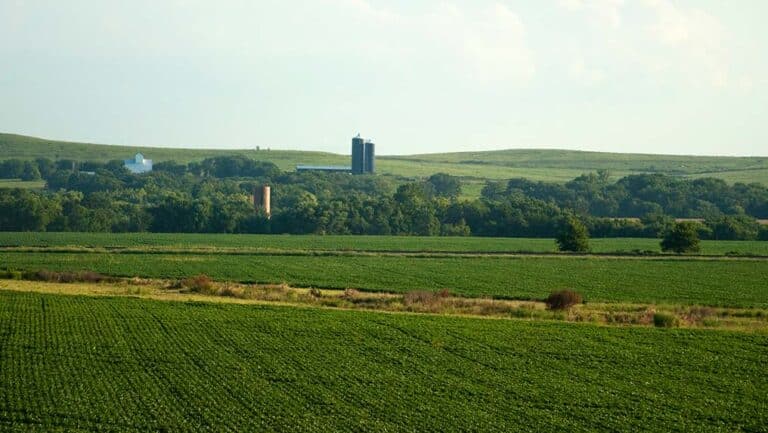What Farmers Need to Know About Hiring H-2A Workers
H-2A workers have become vital to farming, but the process of applying is a challenge for farm employers.
The cost of farm labor has been increasing for years. In 2024, farm labor is expected to rise 7.4 percent, costing American farmers more than $47 billion total. To offset these costs, many farmers have turned to less labor-intensive crops and automated farm technology to meet growing demand in a tight labor market. But for those who don’t have that option, the H-2A worker program has provided an alternative solution.
H-2A workers account for approximately 10 percent of all agricultural labor used in crop production, but the constantly changing H-2A process and requirements discourage some operators from hiring the help they need.
In this article, we spoke with the nation’s leading H-2A service provider, másLabor, to answer some of the top questions farm employers have when navigating the H-2A temporary farmworker program.
Farm Labor Solutions: An Overview of the H-2A Program for Agricultural Employers
Considering the H-2A program but feeling a bit unsure about where to start? Watch this recorded webinar hosted by másLabor, and gain clarity the H-2A program, including it’s history, requirements, and filing process, as well as the importance of compliance.
What is H-2A and how is it different from H-2B?
The H-2 visa program was established in 1952 under the Immigration and Nationality Act (INA) to address the need for temporary agricultural workers. In 1986, the program was divided into two classifications, H-2A and H-2B, by the Immigration Reform and Control Act (IRCA).
H-2A visas are specifically designated for agricultural work and are uncapped, meaning there is no limit on the number of visas that can be issued. H-2A workers may perform any tasks that meet the definition of “agriculture” under the Fair Labor Standards Act (FLSA) or the Internal Revenue Code (IRC). Primary tasks under the H-2A program involve “farming in all its branches”, including preparation, planting, cultivating, and harvesting crops, as well as the raising of livestock and other animals. Secondary tasks, which are performed by a farmer or on a farm as an incident to or in conjunction with the operation, may include packing, processing, and transporting agricultural products.
On the other hand, H-2B visas are for non-agricultural work and are capped. These visas are commonly used in industries such as landscaping.
What legislation impacts H-2A workers and employers?
Farm policy can often impose strict and frequently changing guidelines on farmers, burdening them with complex regulations and shifting requirements. It can be challenging for a farm employer to stay informed on changing regulations without expert guidance and updates.
Adverse Effect Wage Rate (AEWR)
Wages in the H-2A program are governed by a methodology known as the Adverse Effect Wage Rate (AEWR). Historically, employers were required to pay a fixed, statewide AEWR to all workers, regardless of what tasks were performed.
In 2023, however, the U.S. Department of Labor (DOL) implemented a new rule for wage calculations. For non-standard H-2A occupations, the new rule requires employers to pay wages based on the Occupational Employment and Wage Statistics (OEWS) survey data. Examples include heavy tractor-trailer truck drivers, supervisors, farm mechanics, and agricultural construction workers. In many cases, the OEWS wage significantly exceeds the base AEWR. Due to the impact of this rule and the uncertainty it brings, several farm bureaus and trade associations have petitioned DOL leadership and members of Congress to reform the wage methodology and repeal the OEWS provisions.
The Migrant & Seasonal Agricultural Worker Protection Act
The Migrant and Seasonal Agricultural Worker Protection Act (MSPA) is a 1980s statute designed to protect migrant and seasonal agricultural workers. While Congress intended for MSPA to exclude H-2A workers, the DOL has incorporated many MSPA provisions into the H-2A regulations.
For example, H-2A employers acting as Farm Labor Contractors (FLC) must demonstrate compliance with MSPA to obtain an H-2A labor certification. This includes providing DOL with copies of their FLC licenses and appropriate authorizations for vehicles, driving, and housing workers.
What are the eligibility requirements for the H-2A worker program?
To be eligible for the H-2A visa program, the farm labor must:
- Have a Temporary or Seasonal Need: H-2A employers must demonstrate a need for workers that is tied to a certain time of year by an event or pattern requiring elevated labor levels. Except in extraordinary circumstances, DOL generally applies a 10-month limit on H-2A contracts for the same occupation and location.
- Qualify as Agriculture: The employer’s work activities must satisfy the FLSA or IRC definition of “agriculture,” or qualify under one of the H-2A program’s special carve-outs (such as logging employment or pressing of apples for cider).
- Unfilled by U.S. Workers: Employers must demonstrate that there are insufficient numbers of qualified U.S. workers who are able, willing, and available to fill the job positions.
What are the employer requirements for H-2A workers?
For an employer to be eligible to hire H-2A workers, they must:
- Conduct Positive Recruitment: Employers must attempt to hire U.S. workers by accepting referrals from the local State Workforce Agency (SWA) and applicants from all other sources, including walk-ins. They must also solicit the return of any seasonal U.S. workers previously employed in the prior season.
- Comply with Wage Requirements: All workers performing the H-2A job duties, including full-time, year-round U.S. workers, must be paid at least the required H-2A wage or piece rate. Workers must also comply with any overtime pay requirements imposed by state law (or federal law, if the activities are non-exempt).
- Reimburse Travel: Employers are responsible for reimbursing inbound and outbound travel expenses for all non-local workers traveling to the job from outside the area. This includes H-2A workers as well as non-local U.S. workers hired during the recruitment period.
- Retain Records: Employers must maintain detailed earnings records and provide workers with an itemized pay statement on or before each pay period. These records and pay statements must include several items specifically required by the H-2A program regulations, including separate tracking for hours offered to the workers (not just hours actually worked).
- Provide Housing and Daily Transportation: Employers are responsible for providing inspected and approved housing to all non-local workers, including foreign H-2A workers and U.S. workers traveling to the job from outside the area. For workers residing in employer-provided housing, the employer must also make arrangements for daily transportation to and from work (and between worksites during the workday).
Do I have to file for H-2A workers on my own?
There are several different filing models within the H-2A program. Individual fixed-site growers may file their own H-2A applications. Smaller growers unable to guarantee full-time employment may also file jointly with other smaller growers in their area. This is known as a Joint Application.
Farm Labor Contractors (FLCs) are also eligible to use the program. FLCs file their own H-2A applications and furnish workers to one or more fixed-site growers in a given area. There are special filing requirements for FLCs, including several items related to compliance under the Migrant and Seasonal Agricultural Worker Protection Act (MSPA).
Finally, employers may choose to participate in an association that acts as the sole or joint employer of the workers on its members’ behalf. This model is popular amongst smaller growers who may need workers intermittently throughout the year rather than on a full-time basis.
Still have questions? Watch our H-2A webinar on demand.
AgAmerica partnered with másLabor, a nationwide organization committed to helping farmers obtain reliable seasonal labor, to host a webinar that covers frequently asked questions from farm employers about the H-2A worker process.
Unlock expert advice by watching the on-demand recording.






